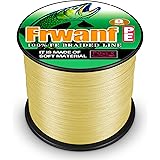There’s a unique allure to slipping away from the daily grind, trading concrete for canopy, and the drone of traffic for the whisper of the river. Many of us dream of such escapes, yet few truly embrace the full spectrum of self-reliance and immersive wilderness experiences. The video above offers a compelling glimpse into precisely that – a solo hammock camping fishing expedition that blends practical bushcraft with serene solitude. It’s an expedition where every action, from collecting fresh bait to crafting a camp bench, underscores a deep connection with the natural world.
The Art of the Discreet Approach: Quiet Fishing and Wild Foraging
Embarking on a successful solo hammock camping fishing trip begins long before the first line hits the water. It necessitates a keen understanding of your environment, not just for safety but for sustenance. The featured adventurer in the video showcases a masterful approach, blending foraging with calculated fishing strategies.
Locating Natural Baits and Wild Edibles
One of the most significant advantages for a seasoned outdoors person is the ability to source resources directly from the land. Why rely solely on store-bought bait when nature provides an abundance of viable alternatives? In the video, we witness the collection of fresh fishing bait from compost piles – a testament to a sustainable, closed-loop lifestyle. These aren’t just any worms; they’re native, often more appealing to local fish species. Expanding this ethos, the individual also forages for wild strawberries, red currants, and black currants, alongside cultivating potatoes and kale. This demonstrates an expert-level understanding of plant identification and seasonal availability, augmenting camp provisions with fresh, nutrient-rich edibles. Identifying these wild edibles requires foundational botanical knowledge, ensuring only safe and beneficial plants are consumed.
Mastering the Silent Cast: River Fishing Tactics
River fishing, especially for wary species like trout, often demands stealth. The video highlights a deliberate decision to “keep the noise down for about two, three hours” – a critical tactic often overlooked by less experienced anglers. Fish, particularly in clear river environments, are highly sensitive to vibrations and sudden movements. A quiet approach minimizes disturbance, increasing the likelihood of successful strikes. The angler deploys a multi-rod strategy, placing one rod in a key target zone and another strategically near a washed-up obstruction, which frequently acts as prime habitat. Observing fish “coming to the surface ’cause there’s so many flies” provides an invaluable insight: sometimes, a shift in presentation, perhaps to a dry fly or a topwater lure, might be more effective than traditional bait. This dynamic adaptation is a hallmark of an accomplished angler who understands trout feeding patterns and their relationship with local insect hatches.
Crafting Your Temporary Sanctuary: Bushcraft Camp Setup
Beyond the primary pursuit of fish, creating a comfortable and functional camp is central to the solo hammock camping fishing experience. The video demonstrates fundamental bushcraft skills, transforming a riverside spot into a temporary home.
Optimal Hammock Suspension and Shelter Strategy
Hammock camping offers distinct advantages over traditional ground tents, especially in uneven or wet terrain. The video’s setup, described as “nice and comfy” and providing warmth, hints at a well-configured system. An optimal hammock suspension involves selecting sturdy trees, utilizing tree-friendly straps, and adjusting the ridgeline for the ideal sag. The choice of an underquilt or top quilt system, potentially combined with a sleeping bag (as implied by the comment “didn’t zip up my sleeping bag”), is crucial for insulation, particularly in cooler temperatures or during a 5:00 AM wake-up. A well-pitched tarp, though not explicitly shown in detail, is implied to provide protection from dew, rain, or even harsh sun, creating a versatile and minimalist shelter. For the seasoned bushcrafter, understanding the subtle nuances of hammock hang angles and suspension geometry means the difference between a restless night and restorative sleep.
Firecraft and Camp Amenities: Beyond the Basics
A well-managed fire is the heart of any wilderness camp. The video shows the creation of a “sand fire pit right down to sand again,” giving it “a little bit of depth.” This indicates a conscious effort towards fire safety and minimizing impact, containing embers and ash. The comment, “Not that I’m gonna need a fire, but I’m gonna have one anyway. Just because uh, such a nice fire pit,” reveals a deeper appreciation for the ritual and comfort fire provides, irrespective of utilitarian need. Furthermore, the construction of a “new little bench” from deadwood found in the river, along with a “fire reflector,” showcases practical field improvisation. These additions, built with simple tools and natural materials, enhance comfort and efficiency, reflecting a commitment to sustainable bushcraft principles rather than simply roughing it. The temporary bridge, with its carefully cut grooves, exemplifies ingenious problem-solving in a dynamic river environment.
Sustenance and Solitude: Camp Cuisine and Canine Companionship
The solo hammock camping fishing trip isn’t just about survival; it’s about thriving in the wild. This includes satisfying meals and, for many, the invaluable presence of a four-legged companion.
Field-Prepared Meals: Simple Yet Satisfying
Camp cuisine on a solo trip prioritizes efficiency and nourishment. The video highlights a range of meals, from “gammon steak” to “spicy sausage and pasta,” complemented by “gingerbread pudding” and a hearty breakfast of “bacon and coffee.” These choices illustrate a balance between convenience and flavor, showing that backcountry meals need not be bland. The “hot water for coffee” and the ingenuity of stirring with a fork due to a misplaced spoon speak to the adaptable nature required in the field. Preparing these meals on an open fire adds to the sensory experience, infusing food with the smoky essence of the wilderness. Effective meal planning for such trips involves considering weight, caloric density, and ease of preparation with limited tools, often using dehydrated or shelf-stable staples alongside fresh catches or foraged items.
Embracing the Wilderness with a Working Dog
The presence of a “working dog” adds another dimension to the solo adventure. The interactions, from playful barks and whimpers to quiet companionship in the hammock, underscore the deep bond between human and animal. Managing a dog in the wilderness requires specific considerations: ensuring their safety from hazards, managing their energy levels (as noted by the dog “running around like a crazy person” in the morning), and adhering to responsible pet ownership principles like leash laws or voice control in sensitive areas. A well-trained outdoor dog can be an excellent companion, offering an extra layer of security and enhancing the overall enjoyment of the solo hammock camping fishing experience. However, it’s crucial to ensure the dog’s presence aligns with Leave No Trace ethics, minimizing their impact on wildlife and the environment.
The Ethos of the Expedition: Leave No Trace and Personal Growth
Ultimately, a solo hammock camping fishing trip is more than just a collection of activities; it’s a philosophy—a commitment to interaction with nature that respects its integrity while fostering personal development.
Practicing Sustainable Wilderness Skills
The video subtly yet effectively demonstrates Leave No Trace (LNT) principles. The careful construction of the fire pit, the use of deadwood for fuel and construction (the bench and bridge), and the conscious “catch and release” of the “small trout” all exemplify responsible wilderness stewardship. Returning a small fish ensures it has the chance to grow and contribute to the local ecosystem, a cornerstone of ethical angling. Using existing or found materials for camp improvements minimizes new impacts and allows for easy decomposition. These actions highlight a deeper respect for the environment, ensuring that the beauty and resources of the wild remain available for future generations. This sustainable approach is paramount in any bushcraft or wild camping endeavor.
Reflecting on Solo Adventures and Skill Refinement
The solitary nature of a solo hammock camping fishing trip provides ample opportunity for introspection and skill refinement. Waking at “5:00 AM in the morning” to the mist rising off the water creates a profound sense of connection to the natural cycles. It’s in these moments that self-reliance truly shines – from problem-solving like fixing a broken gate or improvising a coffee stirrer, to the deep satisfaction of a comfortable camp built with one’s own hands. The journey isn’t just about the fish caught or the miles hiked; it’s about the growth that comes from navigating challenges, appreciating simplicity, and finding profound peace in the wilderness. Each trip offers lessons, reinforcing existing skills and inspiring the acquisition of new ones, continually elevating the practitioner’s bushcraft prowess for future solo hammock camping fishing escapades.








